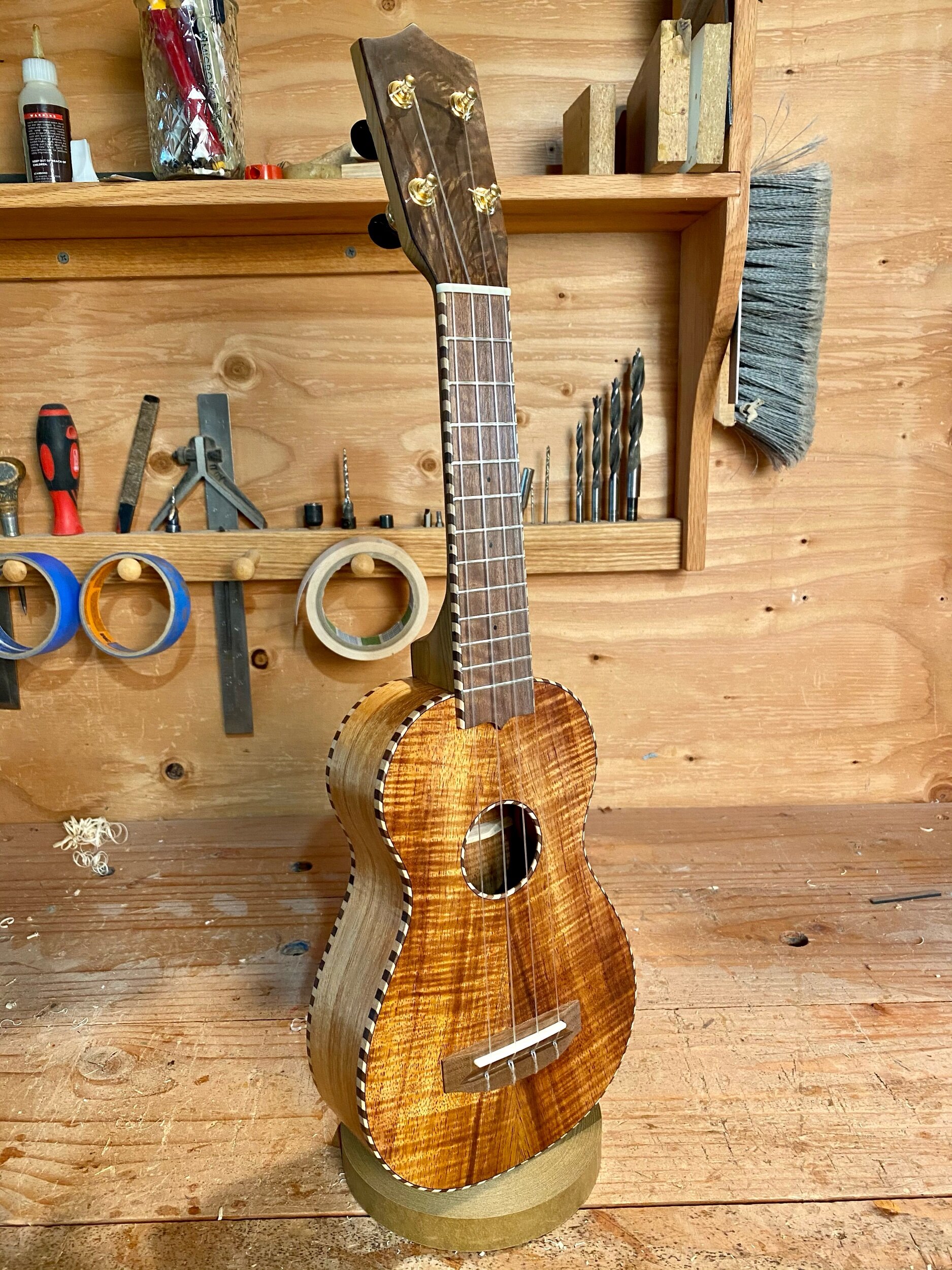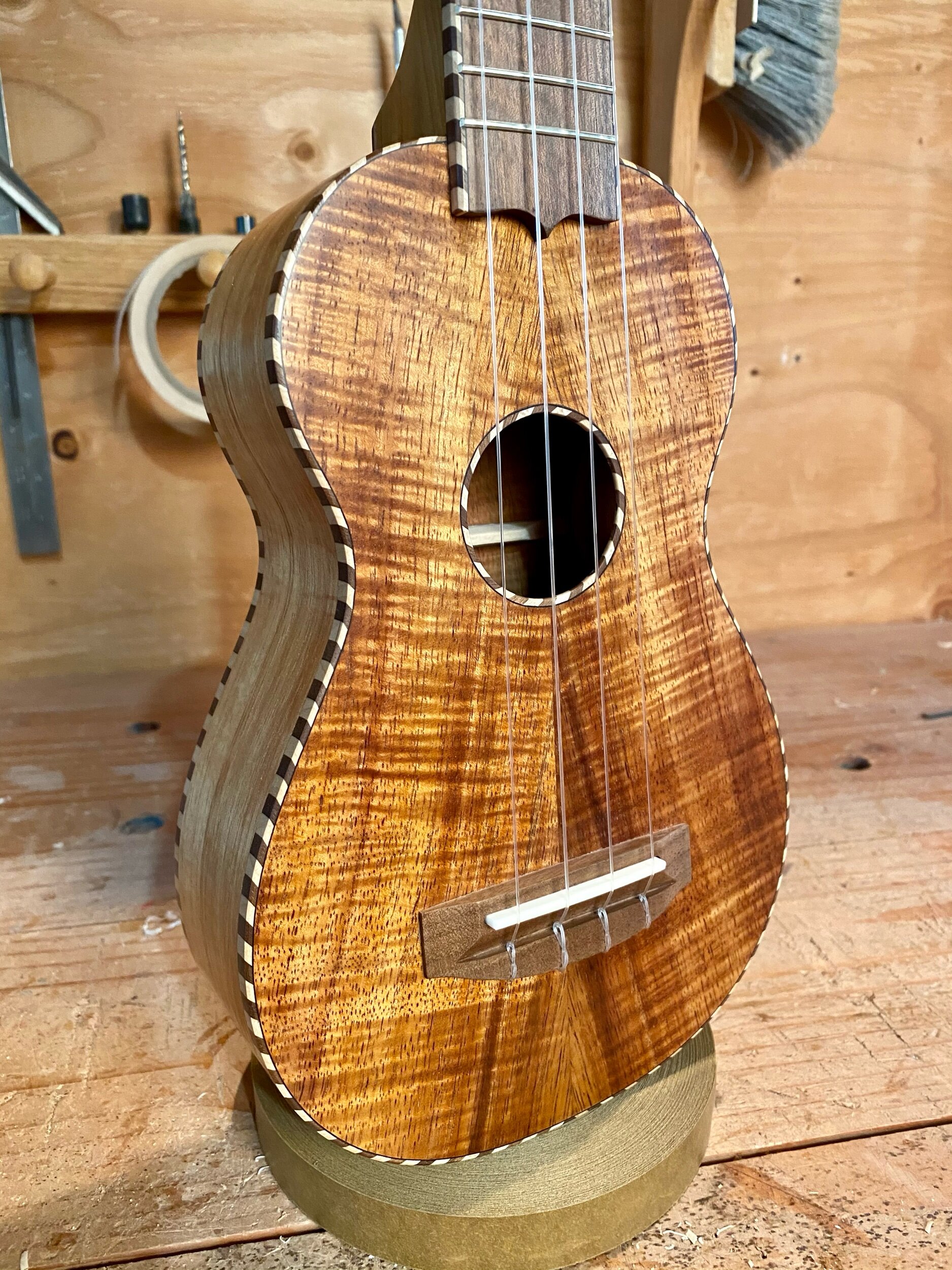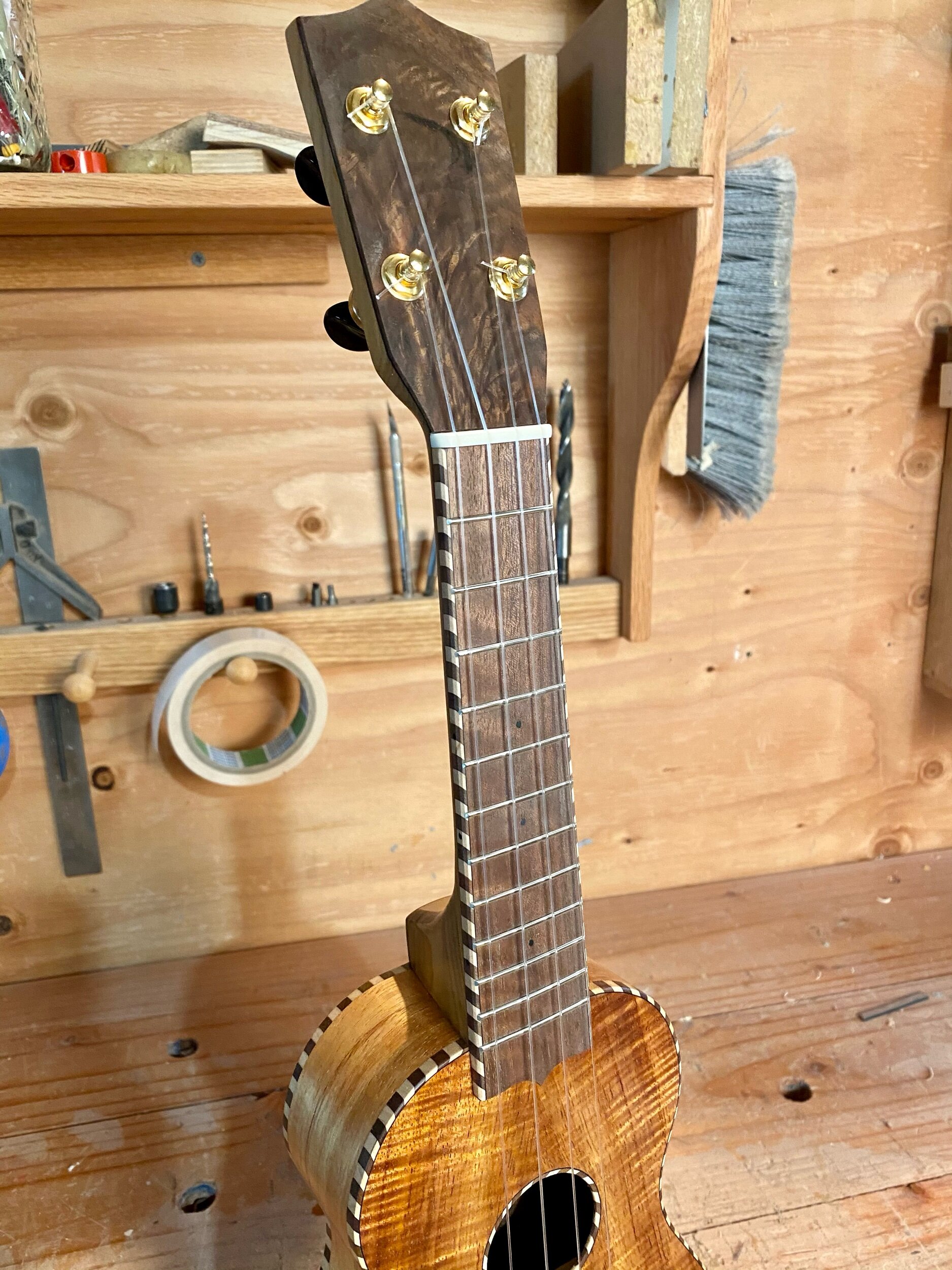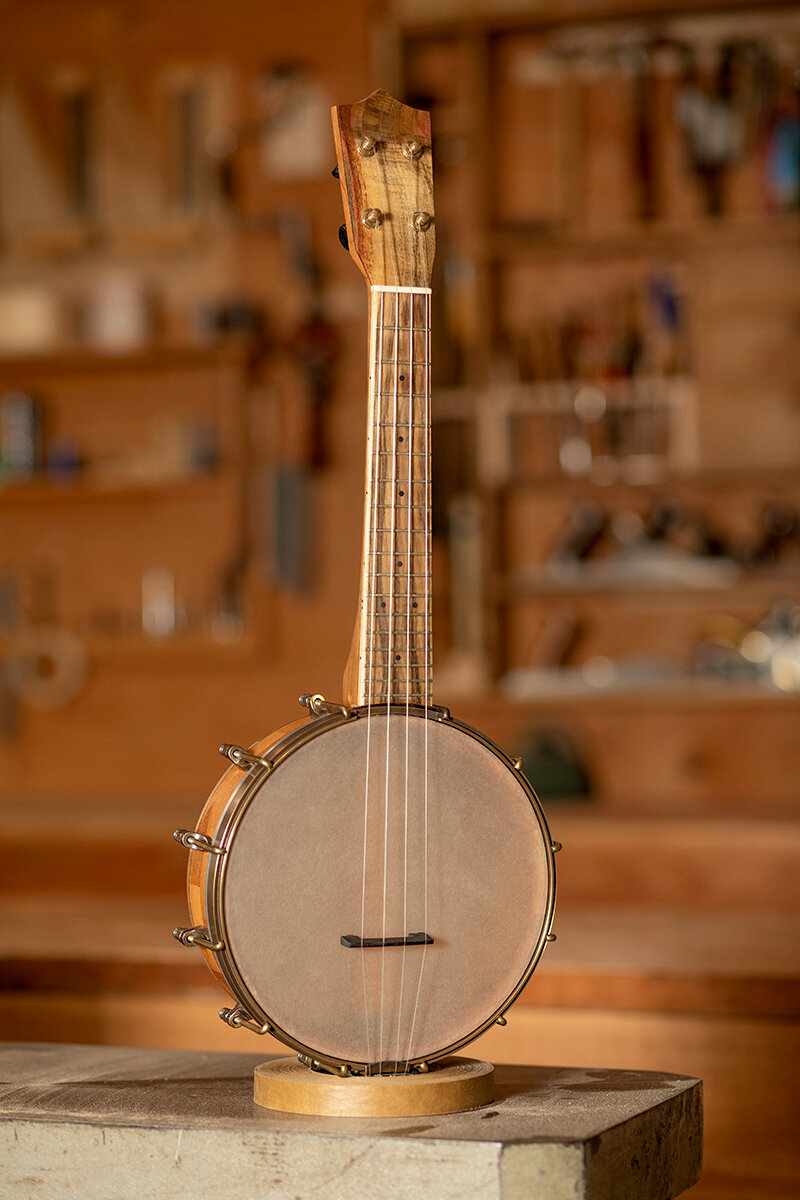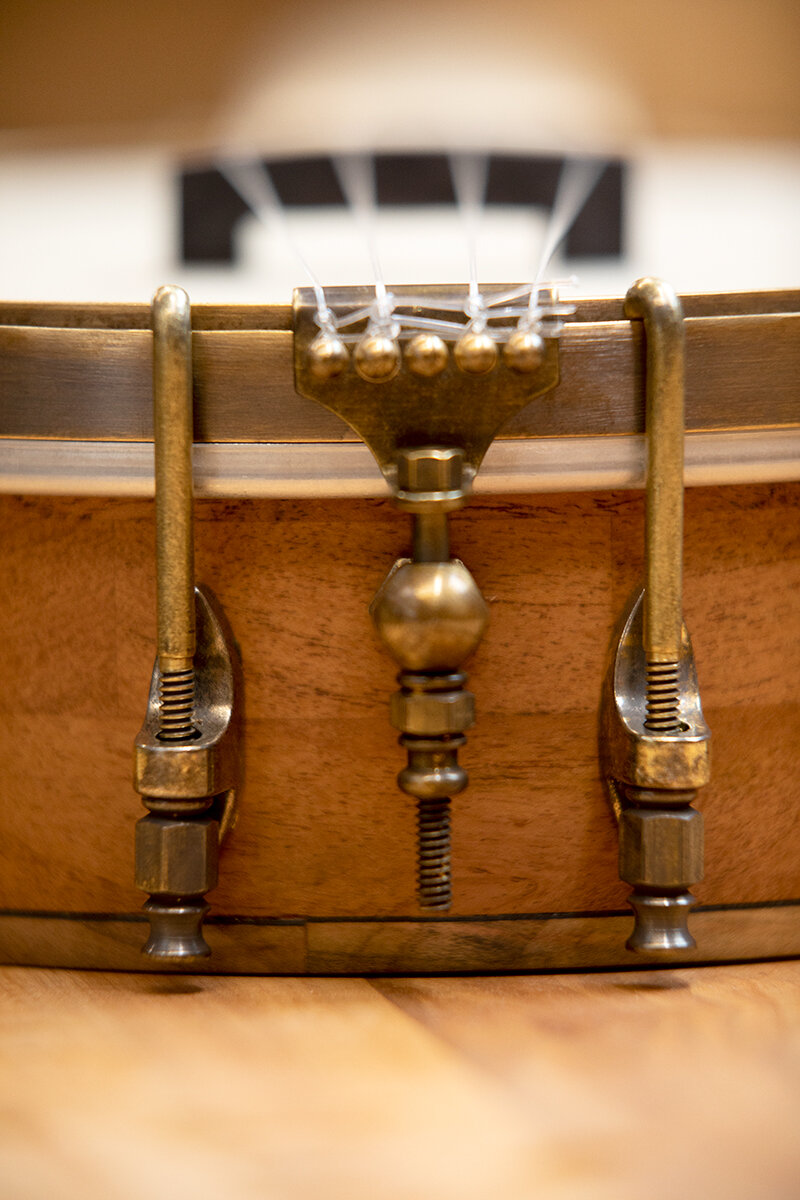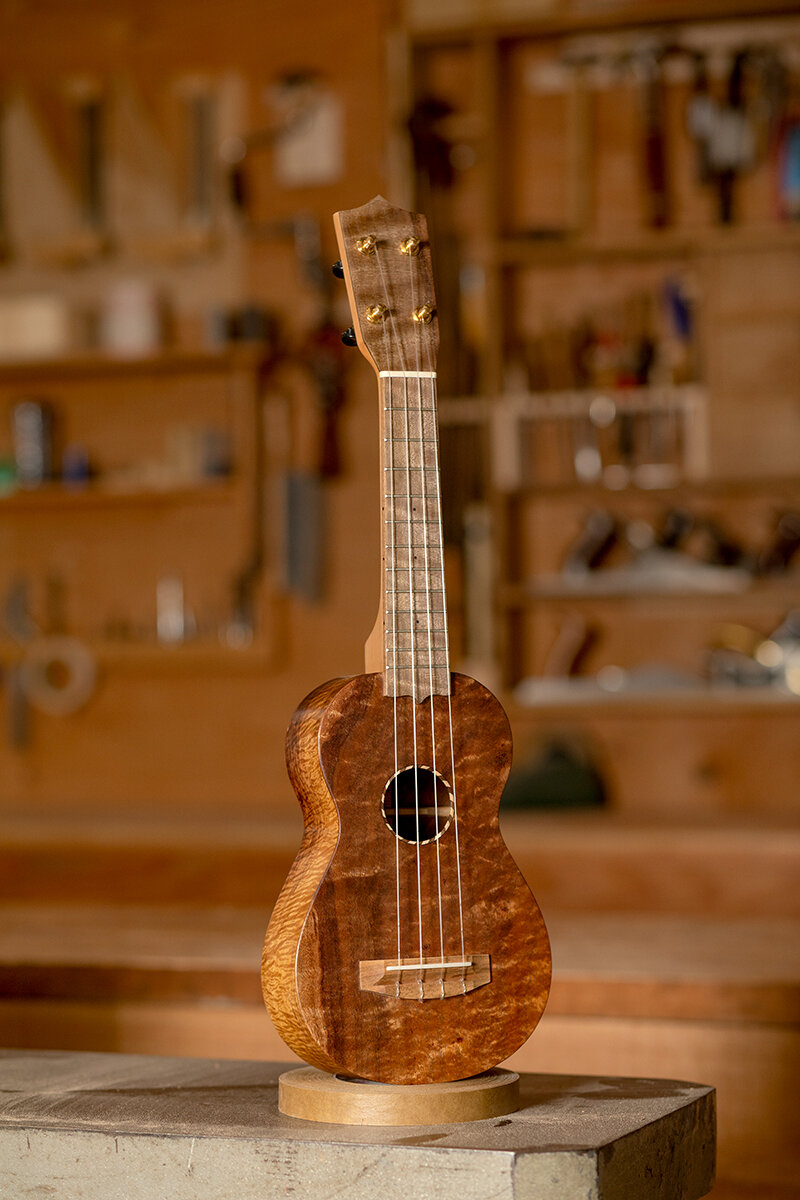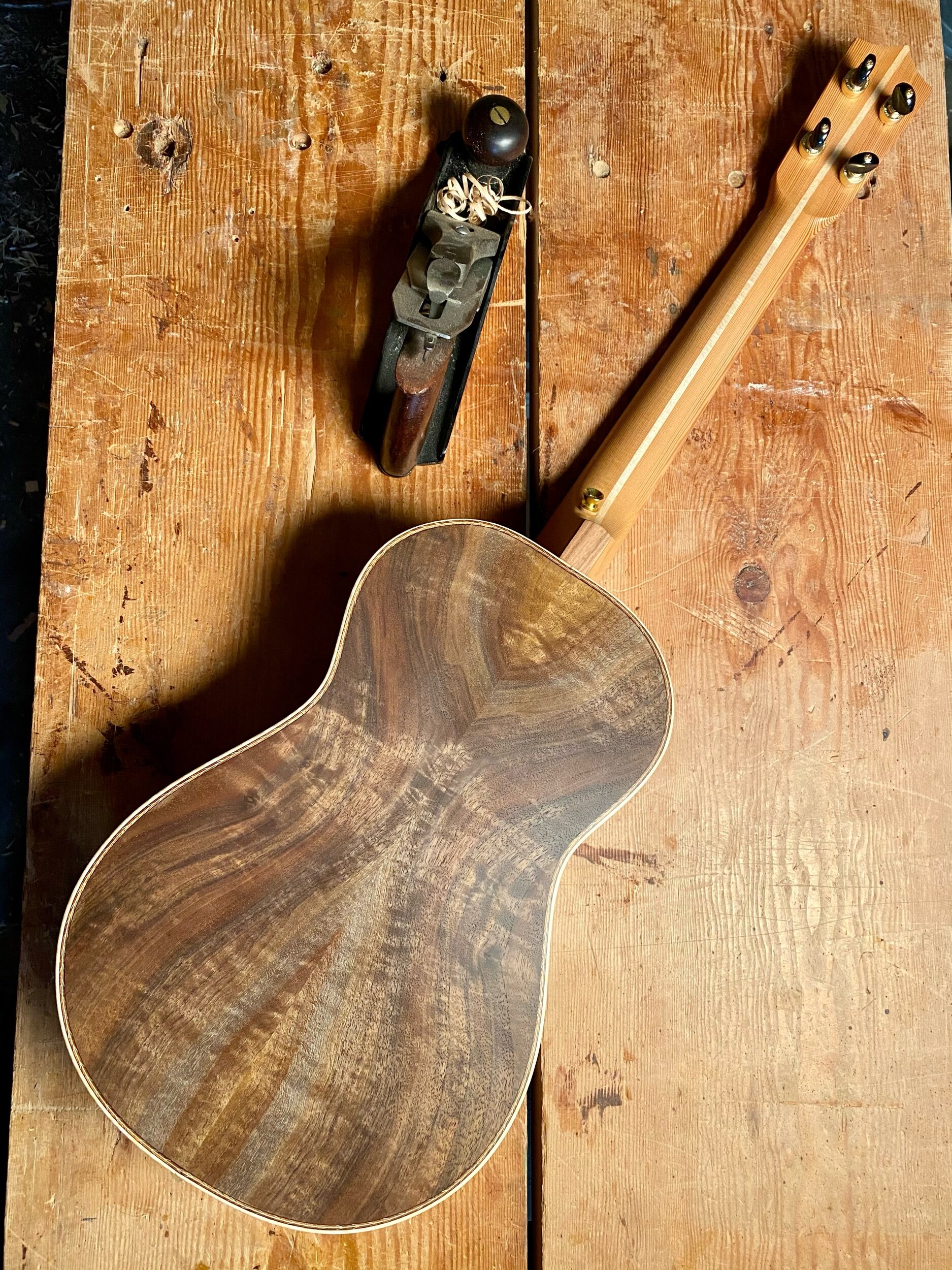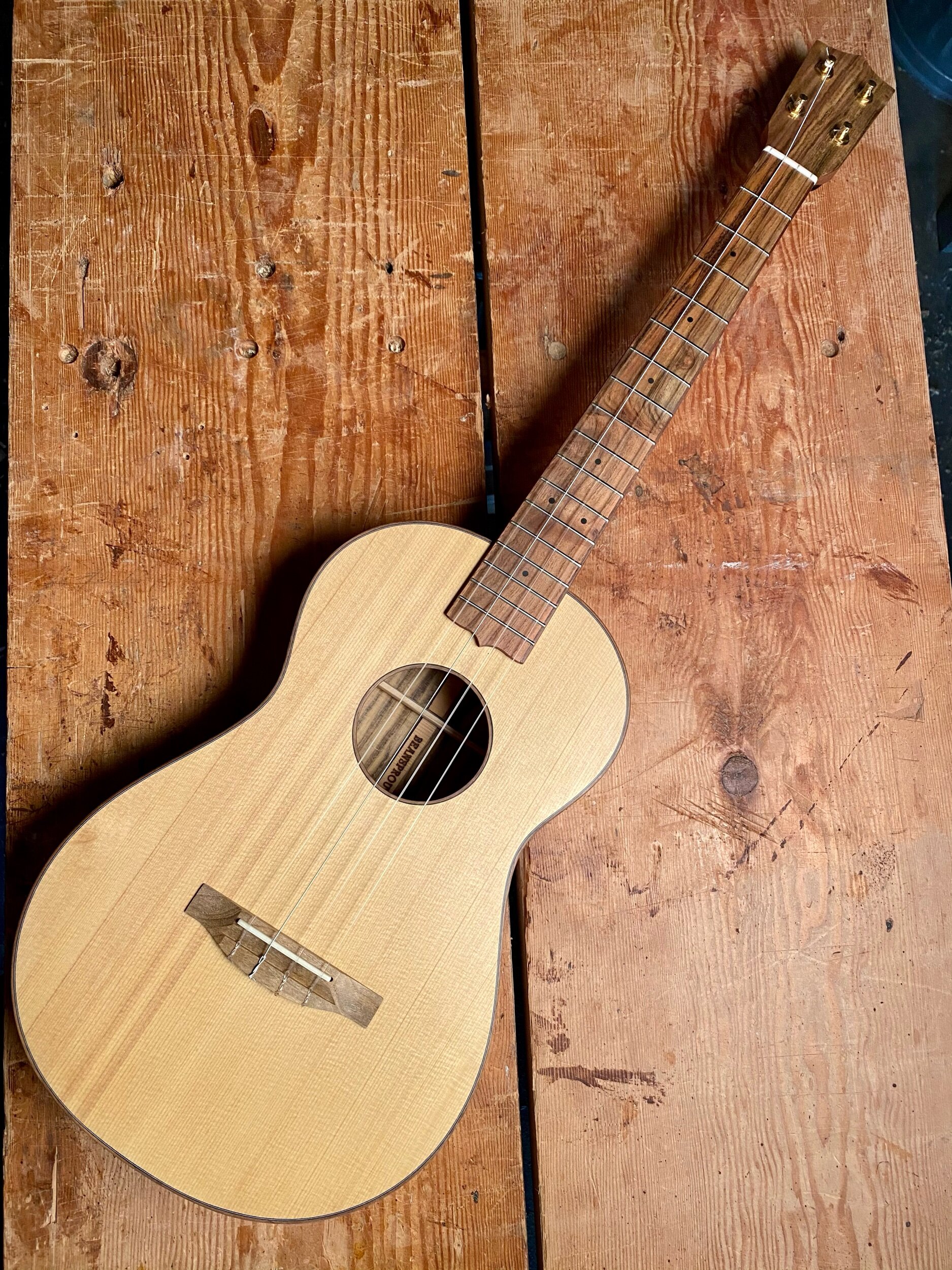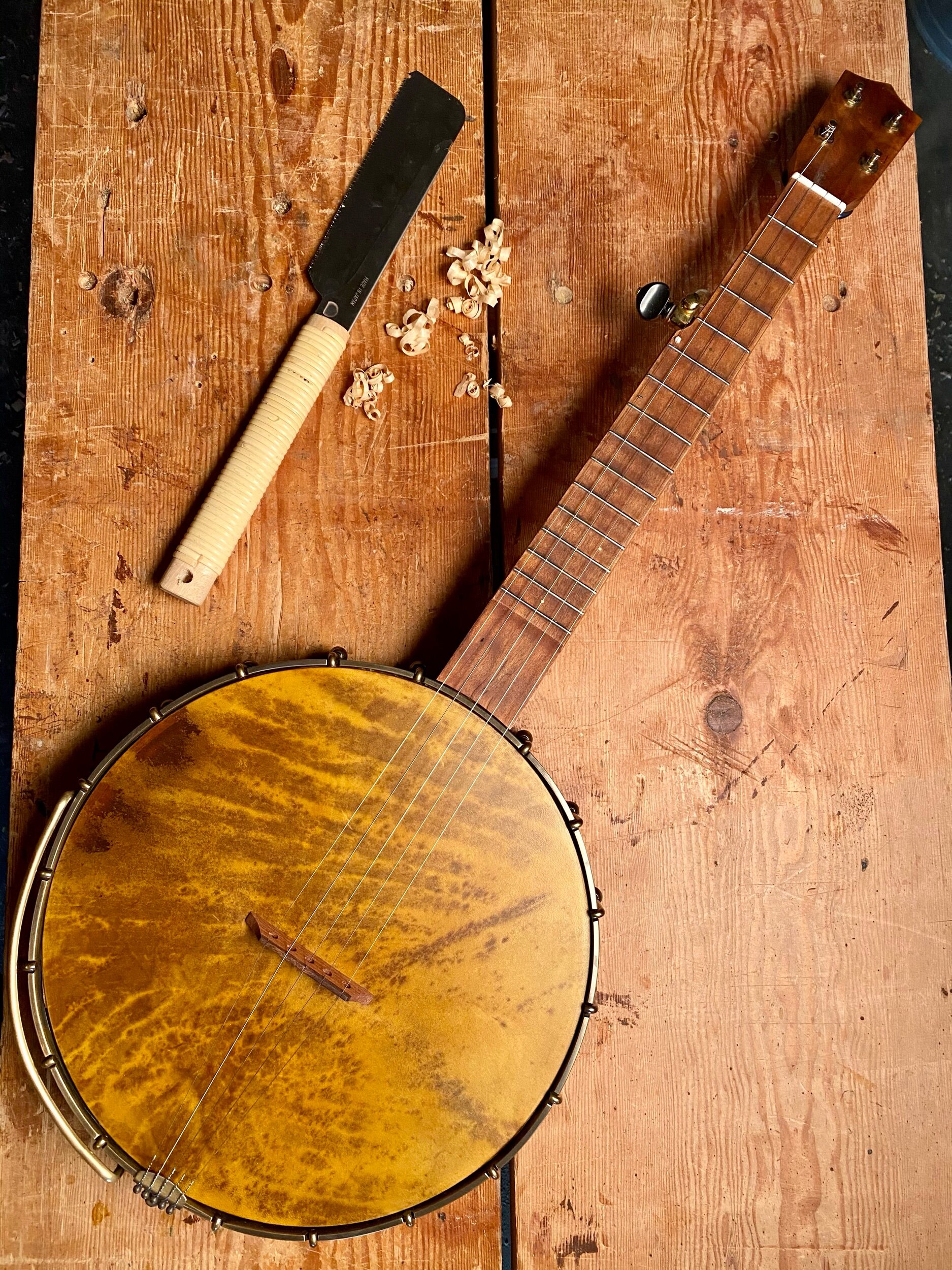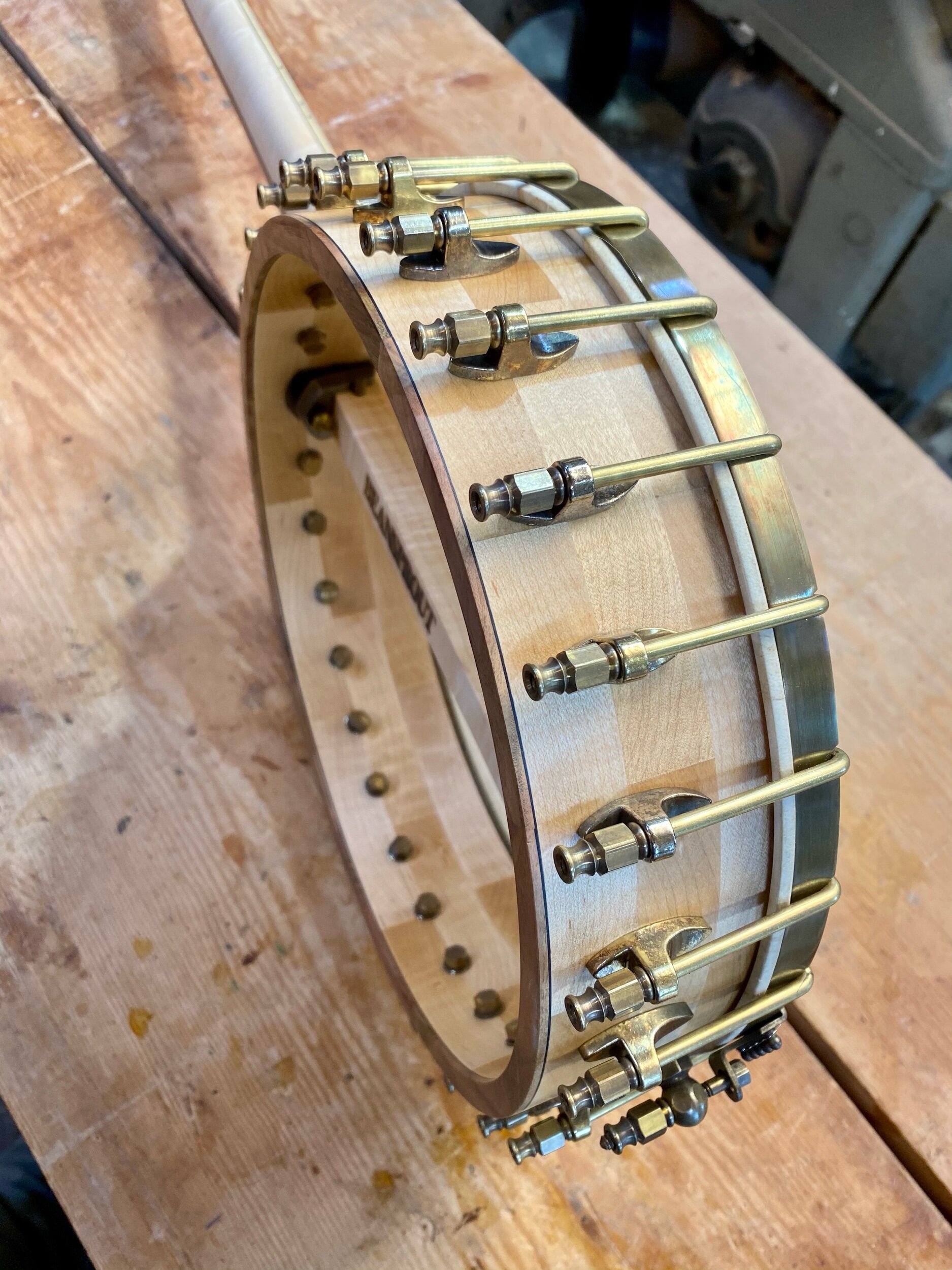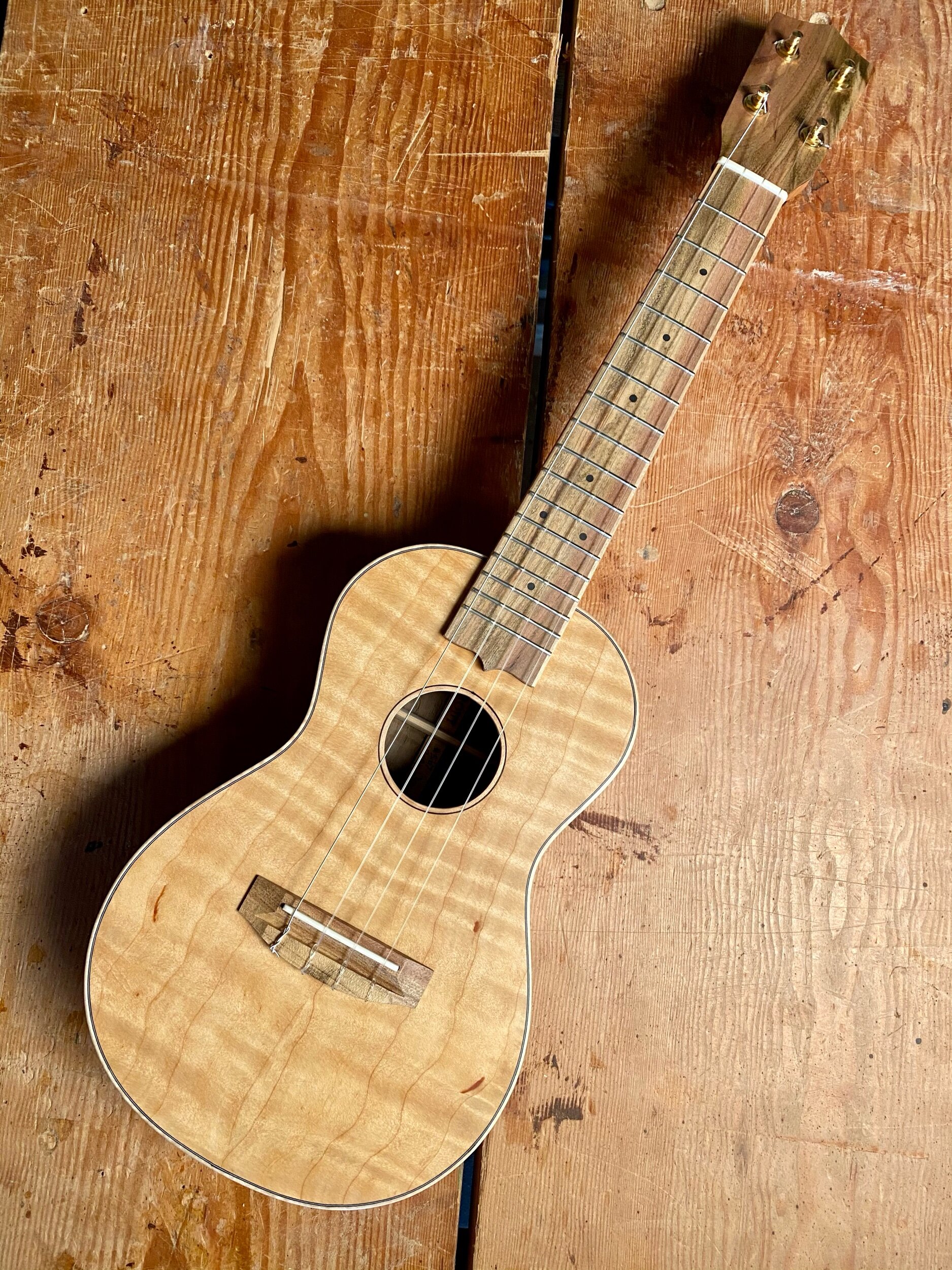Working on a pair of instruments offers an extra set of challenges into the shop schedule. As I work on an instrument, I often let the wood, the shop flow and any happy accidents steer me to make design decisions along the way. But with two instruments, I had to keep it really tight and make sure they truly belonged together. This set also included a few small design requests from the customer: brass fret dots, raw brass and cream tuners and translucent goat skin heads. I chose old, air dried black walnut from Vashon Island for the bodies and Pistachio from California orchards for the rest. I made the brass tension hoops and my friend Brooks Masten made the rest of the hardware. The big four string banjo is 11” rim and 20” scale, tuned dGbd. The concert banjo uke is an 8” rim and 14.7” scale, tuned gCea.
“Aaron and Nicole,
I am so pleased with the pair of banjos. I have been following your work for many years. The quality has always been apparent through your videos, but holding them in my hands has really exceeded my expectations. The aesthetics, tone, and playability are excellent. I look forward to using them on many projects ahead.
Thank you for your passion in creating these instruments. I always look forward to seeing what you create.
Have a great day,
- C. P. ”























































